Get Sage HR
.svg)
Sage HR is a modular, cloud-based HRIS designed for SMBs to streamline and automate HR functions. Its flexible, per-module system covers core HR capabilities—including employee records, leave management, performance tracking, timesheets, recruitment, and shift scheduling—while integrating seamlessly with the broader Sage ecosystem, especially accounting and payroll. With strong usability, a robust mobile app, time-saving automations, and dedicated customer support, Sage HR offers an efficient, scalable solution for businesses aiming to optimize HR operations and enhance employee engagement.
.svg)
Strengths
Compliance Management: Advanced document expiration tracking and automated reminders reduce regulatory risks for SMBs.
Sage Ecosystem Integration: Seamless connectivity with existing Sage accounting/payroll solutions.
User-Friendly Design: Intuitive interface with strong mobile support for employees.
Scalable Pricing: Modular structure allows businesses to add features as they grow.
HR Expertise Access: Professional HR advice valuable for companies without dedicated HR staff.

Limitations
Product Confusion: Fragmented Sage brand offerings create navigation challenges for buyers.
Pricing Opacity: Inconsistent public pricing leads to unexpected cost escalation during scaling.
Admin Interface Issues: Administrative backend described as unintuitive and outdated despite user-friendly self-service
Integration Constraints: Limited third-party integrations due to reliance on Sage ecosystem.
Key Sage HR Features and Functions
Workforce and Data Management
Sage HR offers a secure, centralized database for storing and managing key employee records, from staff profiles to employment history and compliance documents. Its employee self-service portal, available on both desktop and mobile, enables staff to update personal details, access payroll information, and submit leave requests without HR intervention.
A standout feature is the advanced document management system, which includes expiration tracking, automated reminders, and approval workflows. This functionality not only streamlines compliance but also reduces risk, making it especially valuable for small businesses without dedicated compliance teams.
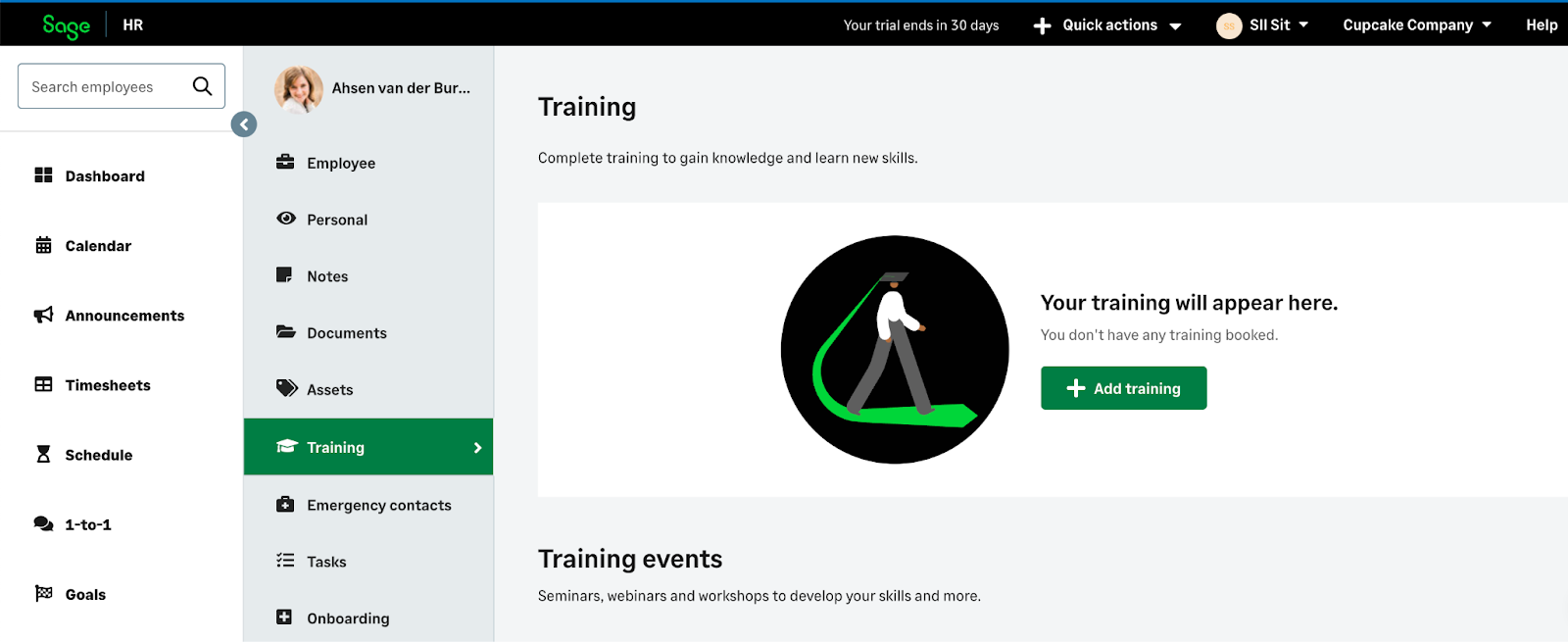
Talent and Performance Management
Sage HR includes a dedicated module for performance management that offers tools such as goal-setting, 360-degree feedback, and 1-on-1 meeting scheduling. It offers a structured framework for evaluating employee performance and tracking progress over time.
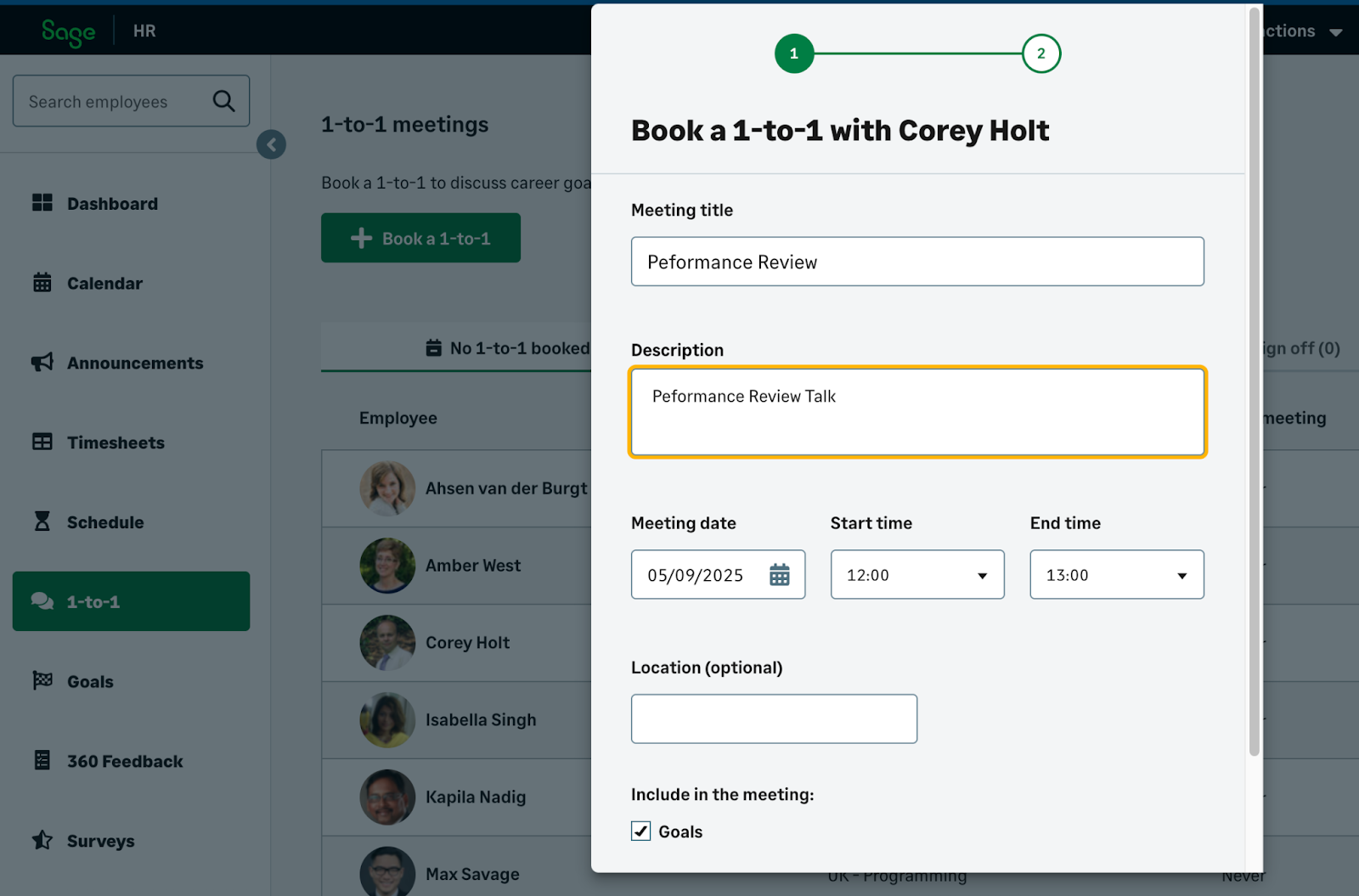
Sage HR 1-on-1 Meet Feature
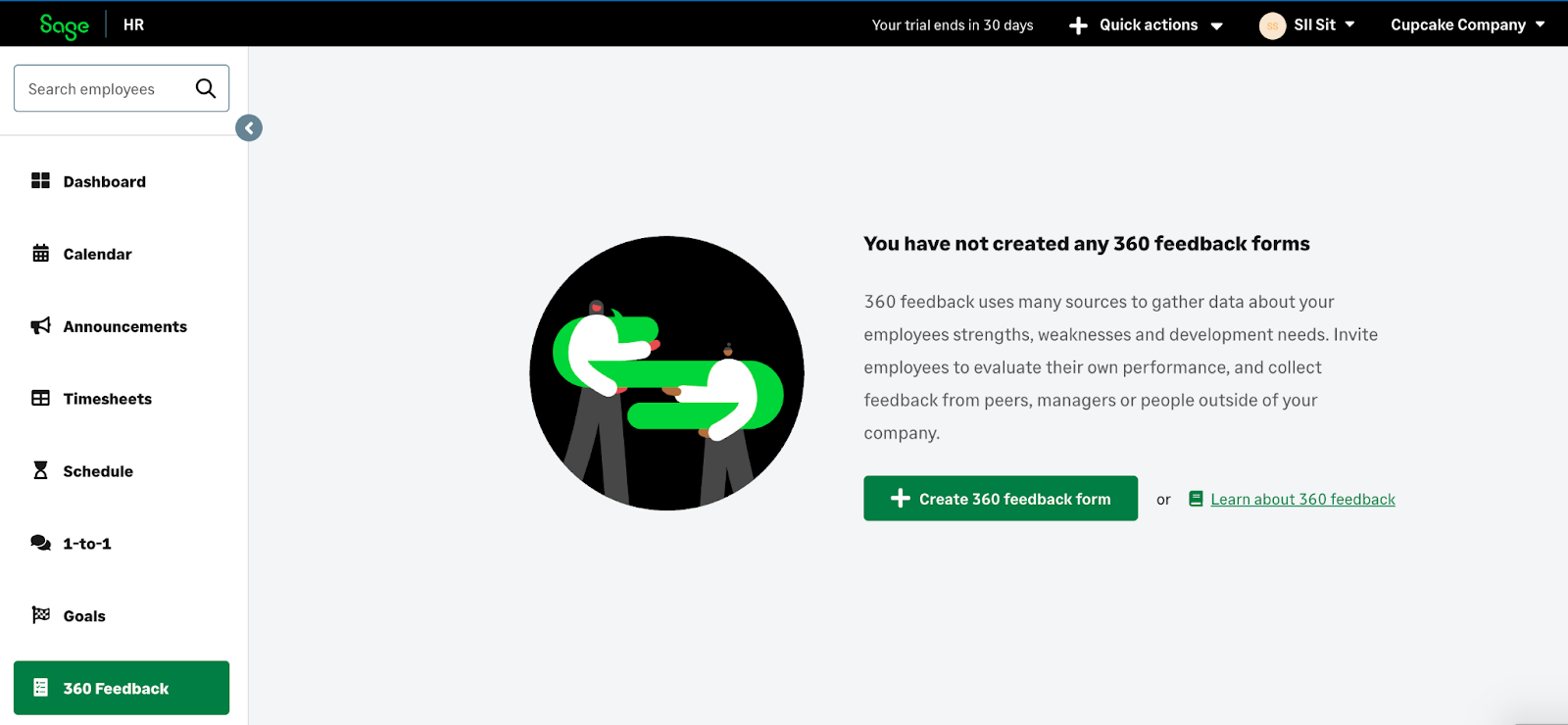
SageHR 360 feedback Feature
Time and Attendance
Sage HR supports time and workforce management through modular add-ons such as Leave Management, Timesheets, and Shift Scheduling. The Timesheets feature allows employees to easily record their working hours and overtime. This information can then be leveraged for accurate payroll processing and insightful performance analysis.
By automating routine processes, the platform reduces administrative burden and improves accuracy, particularly for common tasks like holiday booking and time-off requests.
For organizations with straightforward policies, this automation delivers clear operational value. However, feedback also indicates potential challenges for businesses with complex or highly customized rules.
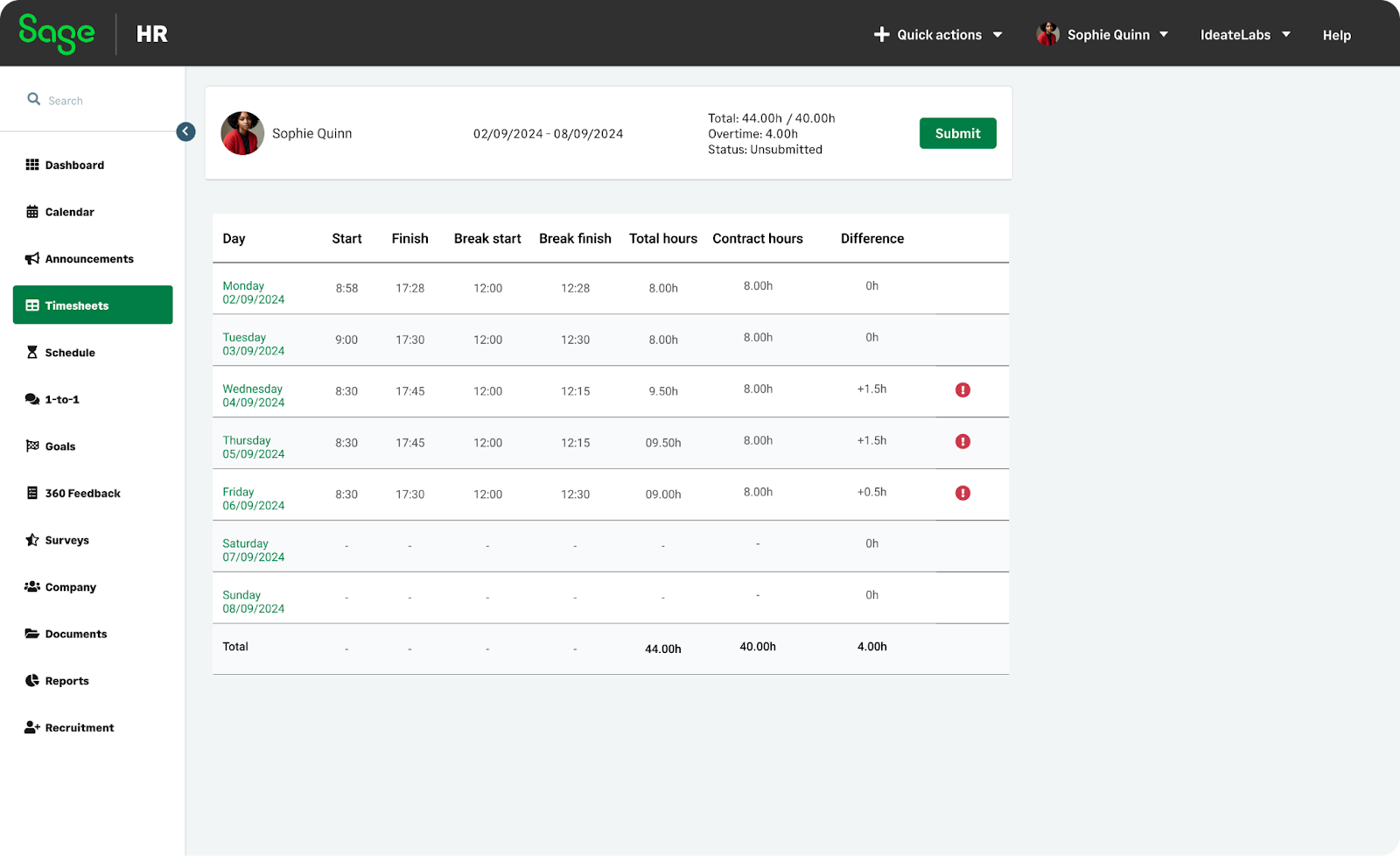
SageHR Timesheets
Recruitment & Onboarding
Sage HR offers an optional Recruitment module available for a monthly subscription, designed to streamline hiring and onboarding processes. Key features include unlimited applicant pipelines, a customizable careers page, interview scheduling, and applicant tracking.
The platform also supports smooth onboarding and offboarding workflows. Users praise the onboarding document management, noting that it remains easy to control and consistent even as the company scales.
These capabilities reduce the administrative burden of hiring and integrating new employees, making the recruitment process more efficient and organized.
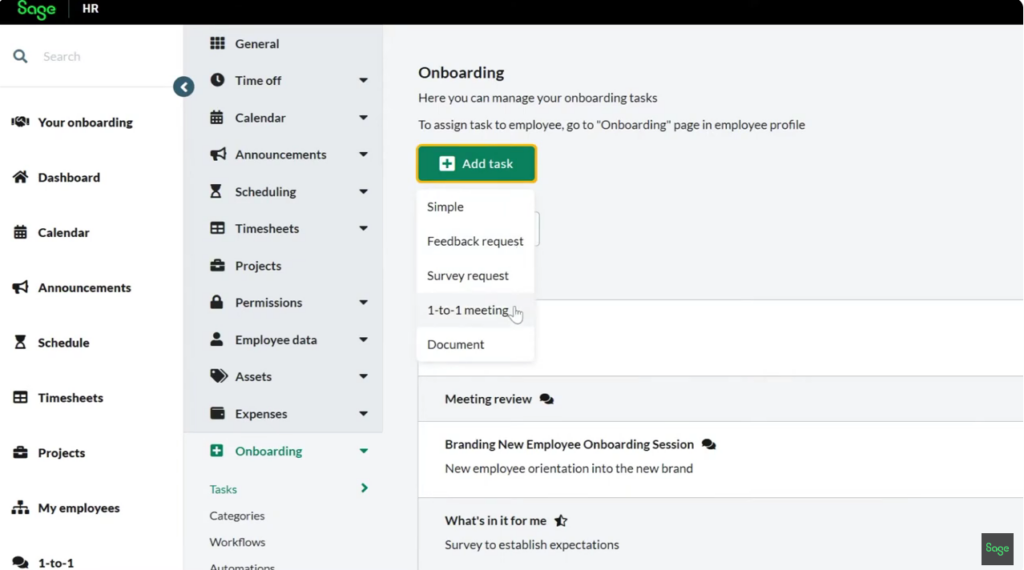

Sage HR Onboarding and Recruitment Pipeline
Payroll & Integrations
Sage HR includes robust reporting and analytics tools that give HR teams actionable insights into workforce trends. Users can generate customizable reports on attendance, leave, performance, and recruitment metrics, all in real time. The platform also provides visual dashboards that highlight key HR KPIs, enabling data-driven decision-making.
These analytics capabilities help organizations identify trends, optimize resource allocation, and monitor employee engagement effectively.
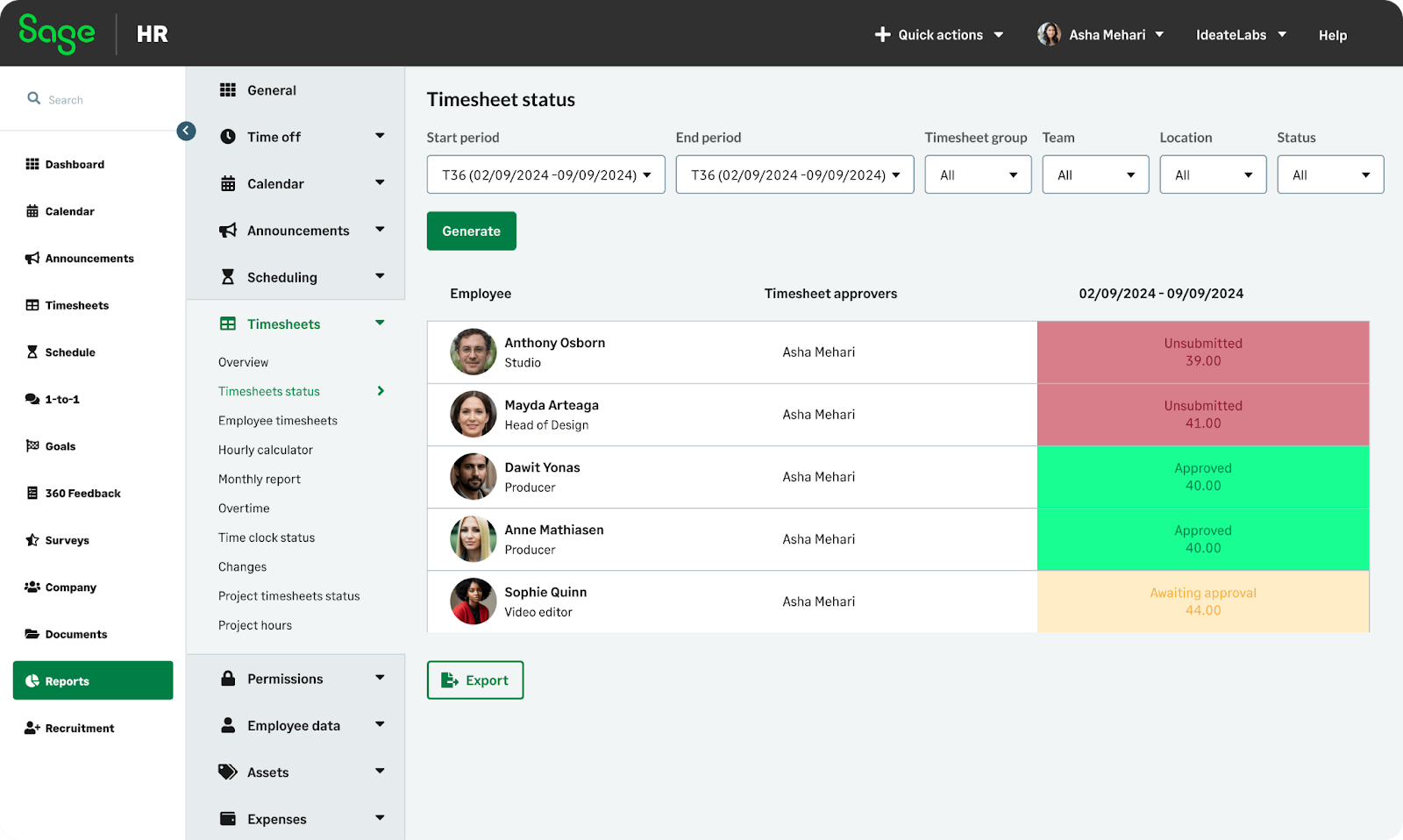
Lattice's Implementation Considerations
Deployment Timeline: Sage HR typically requires 2-6 weeks for full implementation, with the timeline depending on data migration complexity and the number of integrations required. Smaller organizations with straightforward requirements can often go live within 2-3 weeks, while more complex setups may extend to 8 weeks.
Training Requirements: User feedback indicates that "training is long and dry," suggesting organizations should plan for extended training periods and consider supplementary training resources. The investment in thorough training pays dividends in long-term user adoption.
Conclusion & Recommendations
Sage HR emerges as a solid, dependable HR solution, particularly well-suited for small to medium-sized businesses operating within the Sage ecosystem.
The platform stands out for its user-friendly interface and efficient integration capabilities, making it a preferred choice for businesses seeking effective human resource management solutions.
For Existing Sage Users: Companies already using Sage’s financial solutions will find Sage HR a compelling choice. The advantages of a unified, single-vendor ecosystem such as seamless payroll integration and shared data, often outweigh any minor shortcomings in the HR software. For these organizations, sticking within the Sage suite typically offers the easiest and most efficient path.
For Growing SMBs: High-growth businesses should proceed with caution. While Sage HR’s low entry cost is appealing, its modular structure can result in a patchwork of add-ons that may deliver the cohesive functionality needed for a scaling team at a substantial cost. A careful cost-benefit evaluation of all required modules is crucial before committing. In many cases, alternatives that provide a fully integrated platform may be more cost-effective and better suited to long-term growth.
For Companies Prioritizing Integrations and User Experience: Businesses that prioritize a simple, intuitive interface and robust integrations with best-in-class software may find Sage HR limiting. Its restricted native integrations and less intuitive administrative interface make solutions like BambooHR a more suitable option for these needs.



.svg)
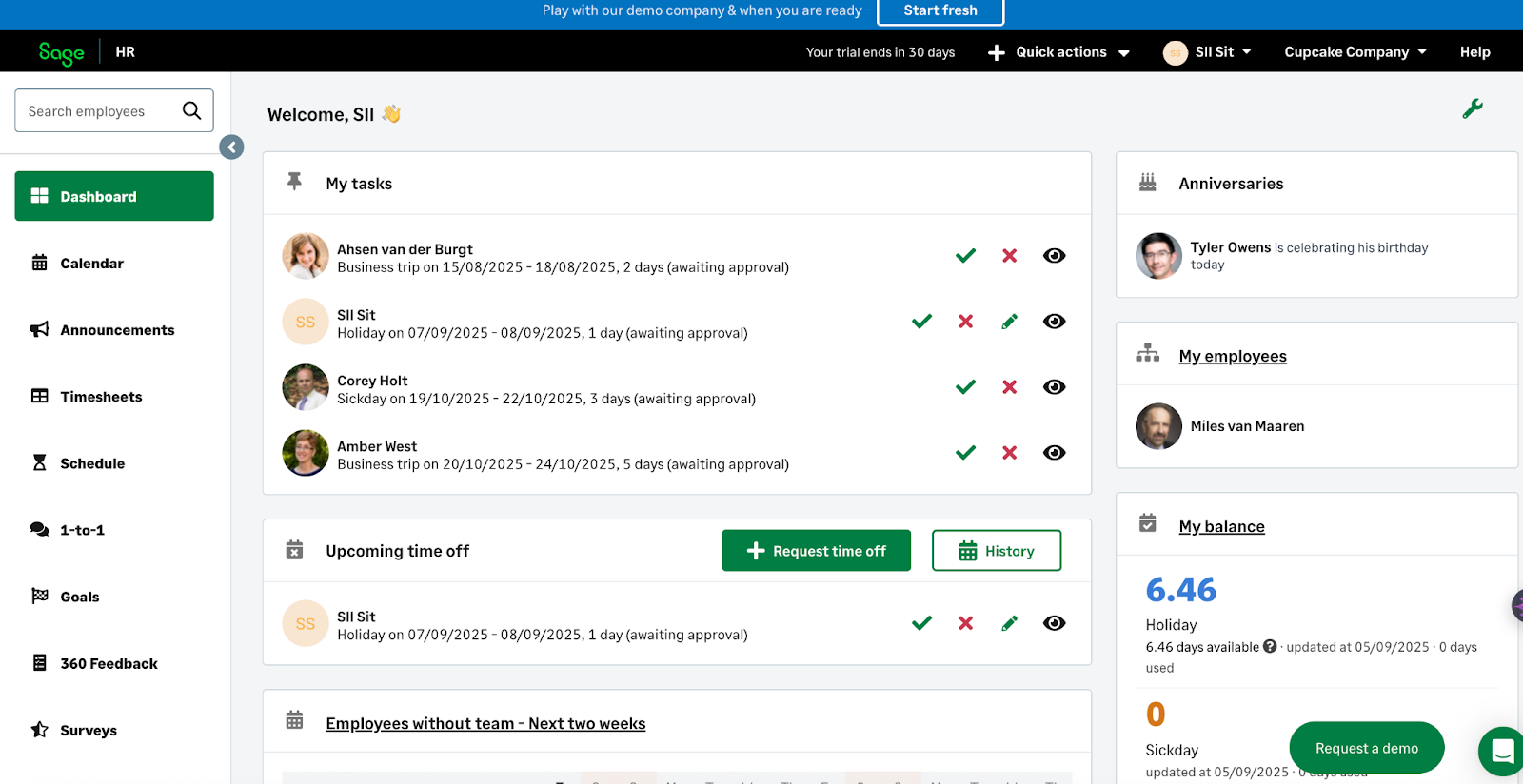
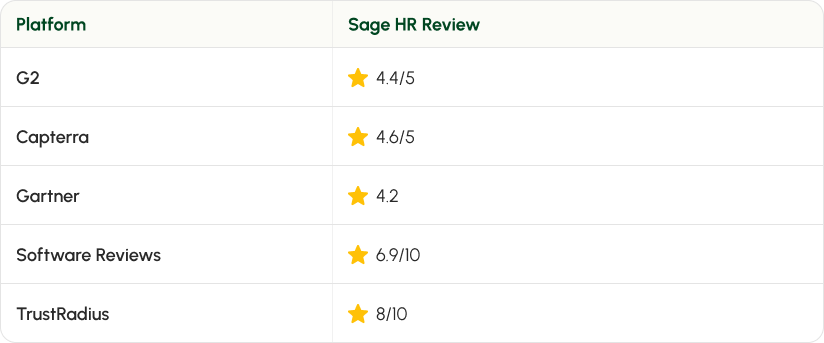
.png)






